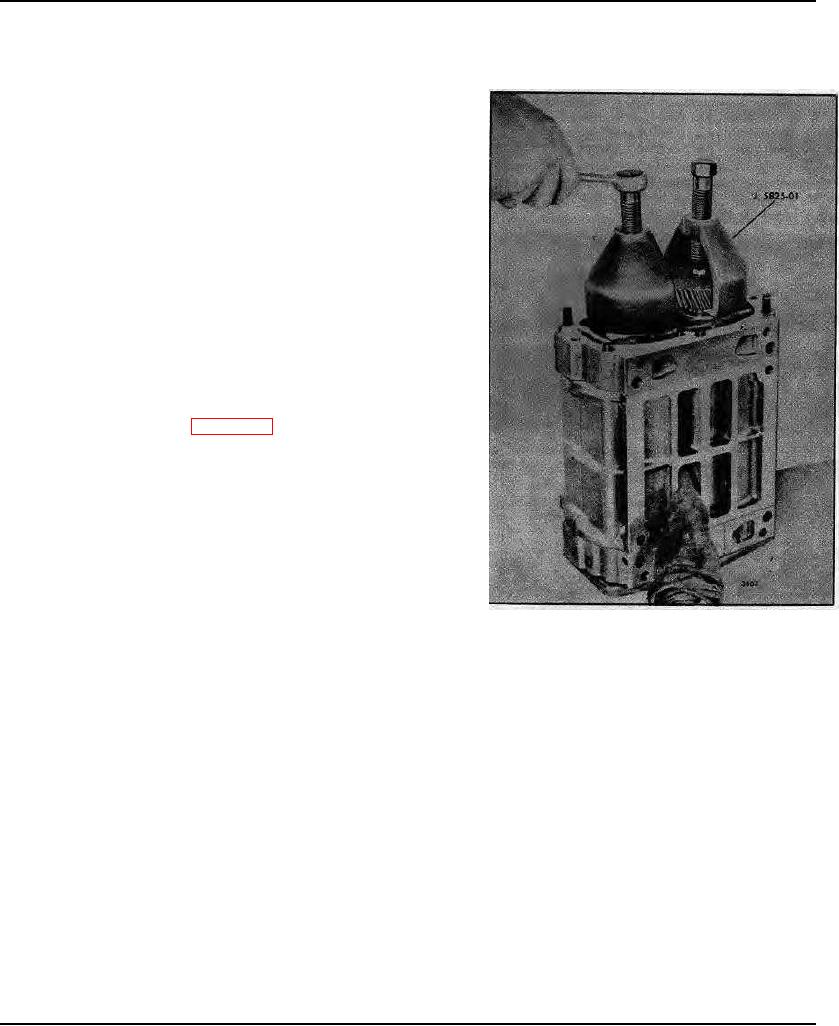
3.4 Blower
DETROIT DIESEL 53
Dirt or chips drawn through the blower will make deep scratches in the rotors and housing. Burrs around such abrasions
may cause interference between the rotors or between the rotors and the blower housing.
Leaky oil seals are usually indicated by the presence of oil on the blower rotors or inside surfaces of the blower housing.
Run the engine at low speed and direct a 'light into the rotor
compartment and toward the end plates and the oil seals. A thin film
of oil radiating away from a seal indicates an oil leak.
A worn blower drive resulting in a loose, rattling sound within the
blower may be detected by running the engine at approximately 500
rpm.
Loose rotor shafts or worn rotor shaft bearing surfaces will result in
contact between the rotor lobes, the rotors and the end plates, or the
rotors and the housing.
Excessive backlash between the blower rotor gears usually results in
the rotor lobes rubbing throughout their entire length.
Remove Blower
Before removing the blower from the engine, remove the air shut-
down housing as outlined in Section 3.3.
3-53 ENGINE BLOWER
1. Remove the six bolts, special washers and reinforcement plates
which secure the blower to the engine end plate and the flywheel
housing. Note the location of the two shorter bolts. Then remove the
front end plate cover and gasket from the blower.
2. Remove the four blower-to-block bolts and special washers and
lift the blower away from the engine.
Fig. 5 Removing Blower Rotor Gears
Page 2

